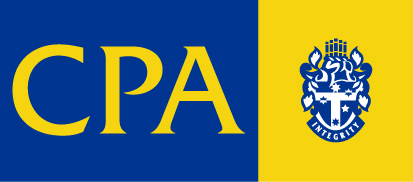In a relatively short period of time, COVID-19 has changed many things – from the way we interact with each other to the way we do business. Whilst year end tax planning is always an important focus, a number of COVID-19 induced factors means that your year end tax planning for this financial year will need to look a little different. We’ve prepared the following list of ten “must-dos” to action for year end tax planning amid COVID-19:
1 Negotiated arrangements: In the wake of COVID-19, most businesses will have negotiated or accepted offers to defer business expenses in one form or another. However, just because such expenses are deferred, does not necessarily mean that they have not been incurred in the 2020 year.
Must do #1: Undertake a careful analysis to ensure that all eligible expenses (even those where payment terms have been deferred) are identified and claimed as an allowable deduction this financial year.
Must do #2: On a similar note, businesses should also review their banking and finance arrangements to be sure deferred interest and other payments have been included as allowable deductions where incurred in this financial year, and also test whether there are any interest prepayment or other arrangements that are achievable with a view to allowing deductions for such prepayments to be brought forward to the 2020 year.
However, businesses should not be hoodwinked into agreeing alternate payment terms with their suppliers before 30 June to enable a deduction as the timing for the deductibility of expenditure is based on when that expenditure is incurred, which is not necessarily to same as when it is paid.
2 JobKeeper payments:
Must do #3: JobKeeper payments used to pay wages are exempt from payroll tax in many States, however as a subsidy paid to the employer, from a payroll tax perspective, businesses should ensure that all money received from JobKeeper is applied to pay wages, rather than directed towards other business expenses.
In most cases employees’ wages will likely exceed the JobKeeper allowance, and the mandatory amount to be passed on to employees will be less than the business’ total wages expense. This means there may be excess available to meet other businesses expenses. However, ensuring as much as possible of the JobKeeper payment is used to pay wages should allow businesses to reduce their overall payroll tax liability.
As the ATO has also announced that the JobKeeper subsidy is assessable, ensuring that the amount received is applied in full towards wages or other deductible expenses should also ensure that the recipient business does not end up paying income tax on the amount received.
3 Business restructures: There are many good reasons to restructure businesses, assets and ownership interests – from family succession and asset protection to streamlining business operations.
Mustdo #4: Now is the time for both businesses and their owners to seriously consider whether a restructure ought be undertaken and quantify any savings likely to be realised by not delaying this exercise.
For example, asset values (and certainly share prices) have reduced as a result of economic and global uncertainty and/or the downturn in business activity. As a consequence, any restructure which involves the transfer or re-organisation of assets will likely result in transaction taxes like capital gains tax and stamp duty being reduced.
4 Contractual arrangements: COVID-19 has resulted in a huge shift in how many employees are working.
Must do #5: Businesses should review the way they engage with their workforce. For example, a review of the business in the wake of COVID-19 might mean that workers are no longer required full-time but instead engaged for ad hoc projects. With many employees working from home, businesses could also reconsider how they can use their office space more economically.
Additionally, working from home and a greater emphasis on results and outcomes during the recent lock-down might also result in a change to how workers will be remunerated moving forward. Where this is the case, businesses might find it beneficial to engage the relevant workers as contractors, rather than employees and there is likely to be some advantage in making that shift from the commencement of the new financial year.
5 Engagement: For a number of businesses, changes in the way their employees perform work as a result of the impact of COVID-19 may also lead to the identification of employees who are surplus to the business’ needs moving forward.
Must do #6: If employees have been stood down as a result of COVID-19, continuing such arrangements into the new financial year may not be sustainable in the long term – even if JobKeeper assists in meeting wage costs in the immediate future. Businesses who find themselves in this situation might consider bringing redundancies forward and claiming any costs associated with the redundancy in the current financial year.
6 Prepayments:
Must do #7: Businesses with sufficient funds to pay their ongoing expenses should consider pre-paying some expenses in advance of next financial year.
Whilst bringing forward a deduction to the 2020 year for those eligible businesses and individuals, pre-payment might also facilitate additional concessions offered by the supplier (and will also have the added bonus of benefitting the supplier in receipt of the payment – particularly those experiencing difficulty in the current economic climate).
7 Bad debts: Given the current economic climate, more focus than usual might be placed on ensuring that businesses who operate on an accruals basis consider and appropriately write off bad debts before June 30, to ensure availability of a deduction this financial year.
Must do #8: If your business operates on an accruals basis, appropriately write off any bad debts before June 30.
8 Accelerated depreciation:
Must do #9: Take advantage of the expanded accelerated depreciation write off, which was recently increased to allow an immediate write off for the cost of assets up to $150,000 which are acquired and installed for use before 30 June 2020.
Even where this is not available, the accelerated depreciation measures allowing a deduction of 50% of the asset’s cost may be of benefit.
9 Superannuation: Ordinarily, year end planning looks to work out what amount should be contributed to superannuation funds to ensure compliance and provisioning adequately for retirement.
10 Must do #10: This year, business owners and family groups might also consider whether they need to withdraw from their superannuation funds in the small window that has currently been allowed, subject to meeting eligibility requirements.
11 Employee advice (bonus tip): Employers might also look to provide generic advice to employees as to what can and cannot be claimed as allowable deductions for expenses incurred as a consequence of having to work remotely from home as a result of COVID-19.
Employees might be entitled to deductions not normally available to them in previous years – for example, the cost of travel from home to work might be allowed as a deduction in certain circumstances, together with deductions for home internet and telephone expenses and the acquisition cost of home office equipment. Advice outlining the relevant rules is likely to be of assistance to, and appreciated by, employees – particularly those who prepare their own individual income tax returns.
Whether deferring payment obligations, renegotiating supply contracts, applying JobKeeper subsidy or for some businesses, placing a focus for the first time in a number of years in streamlining operations – there are very few businesses who have not been affected by COVID-19.
Far from being just another year, the impact of coronavirus means that year-end tax planning for 2020 warrants additional focus.




